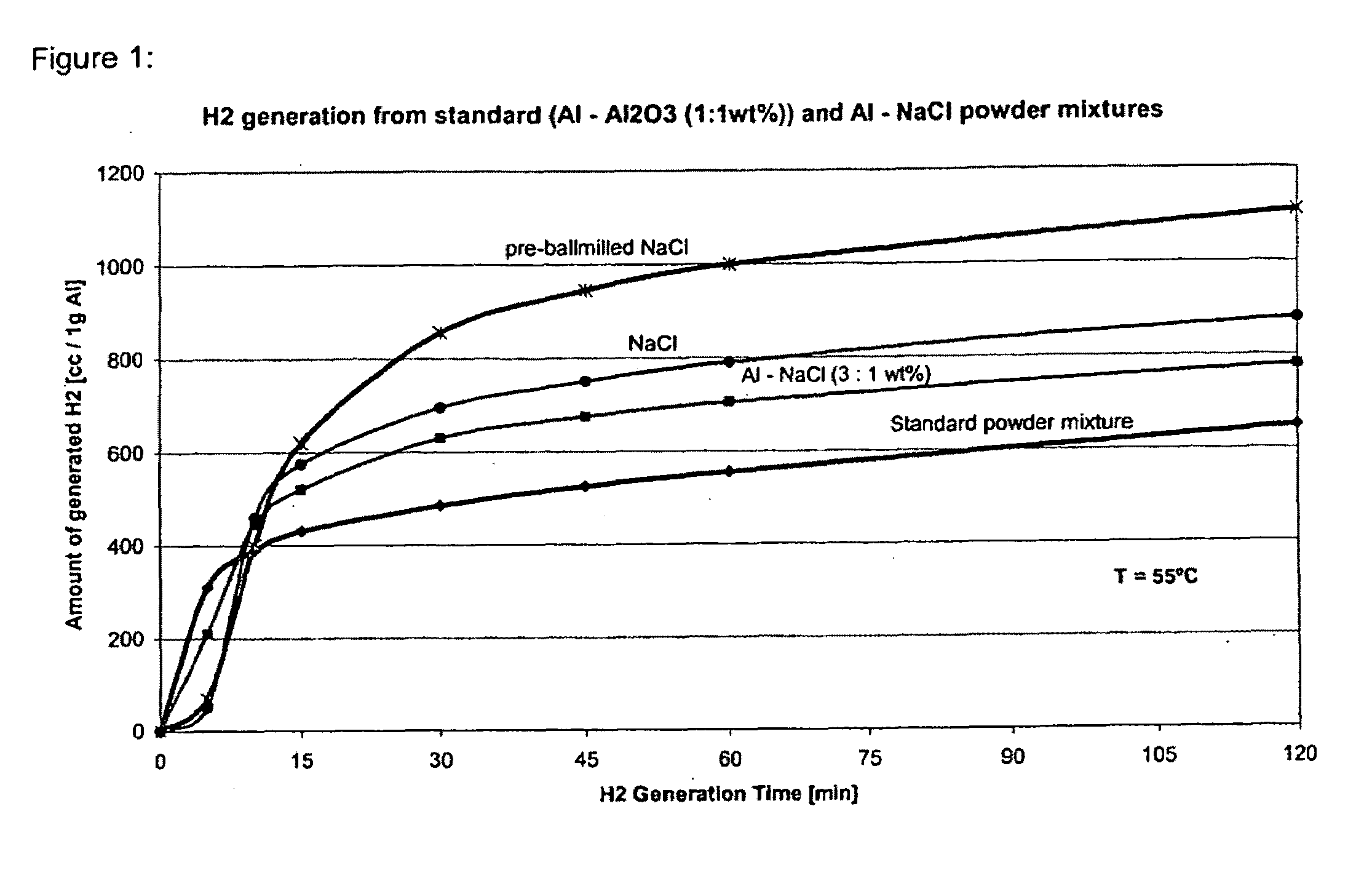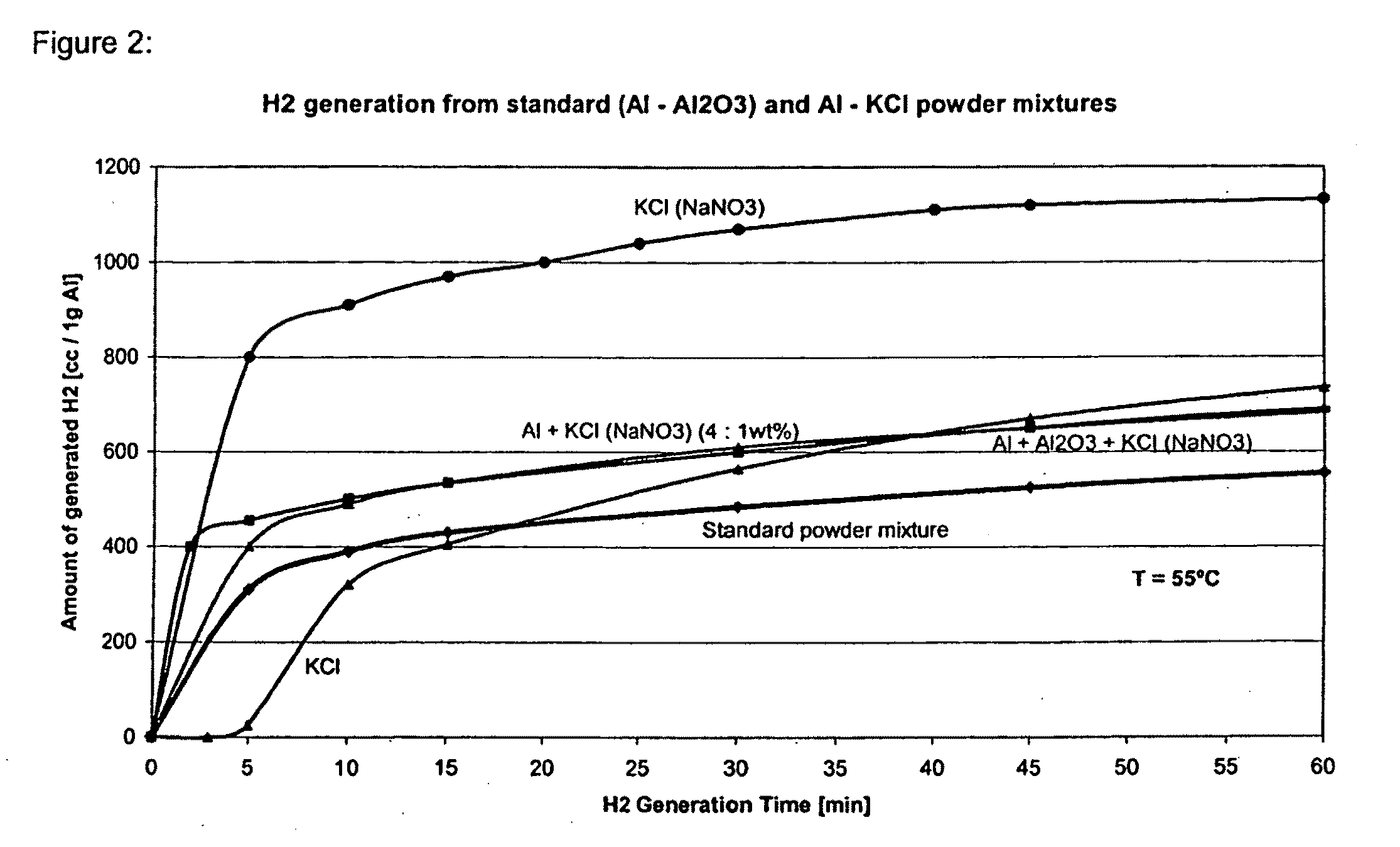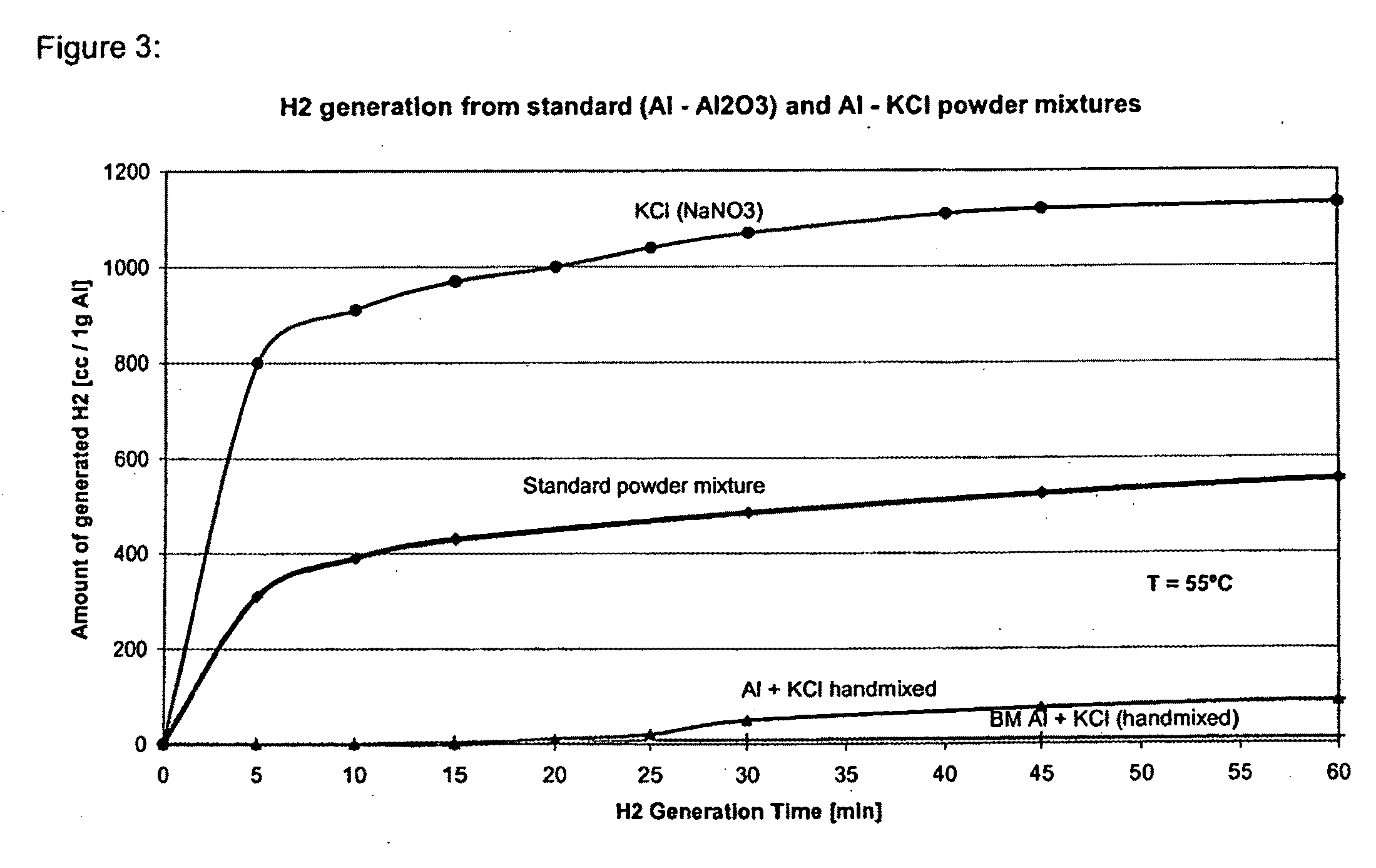Compositions and methods for generating hydrogen from water
a technology of hydrogen and water, applied in the field of compositions and systems for generating hydrogen from water, can solve the problems of high cost, high cost, and high cost of fossil fuel, and achieve the effect of easy separation
- Summary
- Abstract
- Description
- Claims
- Application Information
AI Technical Summary
Benefits of technology
Problems solved by technology
Method used
Image
Examples
example 1
Al—NaCl System
[0113]Al powder (99% Al, common grade, 40 μm average particle size, 1.5 g) and sodium chloride (common table salt, 400 μm average particle size, 1.5 g) were Spex-milled for 15 minutes. Thereafter, 2 g of the resulting powder mixture was enclosed in a paper filter bag and immersed in tap water at approximately pH=6 and T=55° C. The total amount of hydrogen released after 1 hr was 790 cc / 1 g of Al (accounts to 63% of the total theoretical reaction yield value according to reaction (B) or (C)). The generated hydrogen amount surpassed the amount of hydrogen generated by the standard Al—Al2O3 system (50:50 wt %) under same process conditions by 41%.
example 2
Al—NaCl System
[0114]To further reduce the initial particle size of sodium chloride, NaCl (400 μm average initial particle size) was first pre-milled in the Spex mill for 5 min. Thereafter, 1.5 g of the pre-milled sodium chloride was mixed with the standard Al powder (99% Al, common grade, 40 μM average particle size, 1.5 g) and Spex-milled together for another 15 minutes. 2 g of the resulting powder mixture was enclosed in a paper filter bag and immersed in tap water at approximately pH=6 and T=55° C. The total amount of hydrogen released after 1 hr was 1000 cc / 1 g of Al (accounts to 80% of the total theoretical reaction yield value). The generated hydrogen amount surpassed the amount of hydrogen generated by the standard Al—Al2O3 system, under the same preparation and reaction conditions and time, by 78%.
example 3
Al—NaCl System
[0115]The Al—NaCl powder mixture was prepared as described in Example 2. After milling, 2 g of the resulting composite powder was washed in 100 ml, 25° C. cold tap water for 5 min to dissolve and wash out the salt out of the plastically deformed aluminium matrix. The remaining insoluble powder (i.e. predominantly Al, but also remnant NaCl not washed out, e.g. due to complete encapsulation in Al) was enclosed in a paper filter bag and immersed in tap water at approximately pH=6 and T=55° C. for hydrogen generation test. The amount of the dissolved salt was determined by water evaporation and weighting of the residue. Approximately ⅔ (0.668 g) of the salt was recovered. Consequently, the rest of the salt (0.332 g) was enclosed in the aluminium powder.
[0116]The total amount of hydrogen released from such prepared Al:NaCl powder mixture (3:1 wt %) after 1 hr was 705 cc / 1 g of Al which accounts to 56% of the total theoretical reaction yield. The generated hydrogen amount wa...
PUM
| Property | Measurement | Unit |
|---|---|---|
| size | aaaaa | aaaaa |
| size | aaaaa | aaaaa |
| size | aaaaa | aaaaa |
Abstract
Description
Claims
Application Information
 Login to View More
Login to View More - R&D
- Intellectual Property
- Life Sciences
- Materials
- Tech Scout
- Unparalleled Data Quality
- Higher Quality Content
- 60% Fewer Hallucinations
Browse by: Latest US Patents, China's latest patents, Technical Efficacy Thesaurus, Application Domain, Technology Topic, Popular Technical Reports.
© 2025 PatSnap. All rights reserved.Legal|Privacy policy|Modern Slavery Act Transparency Statement|Sitemap|About US| Contact US: help@patsnap.com



